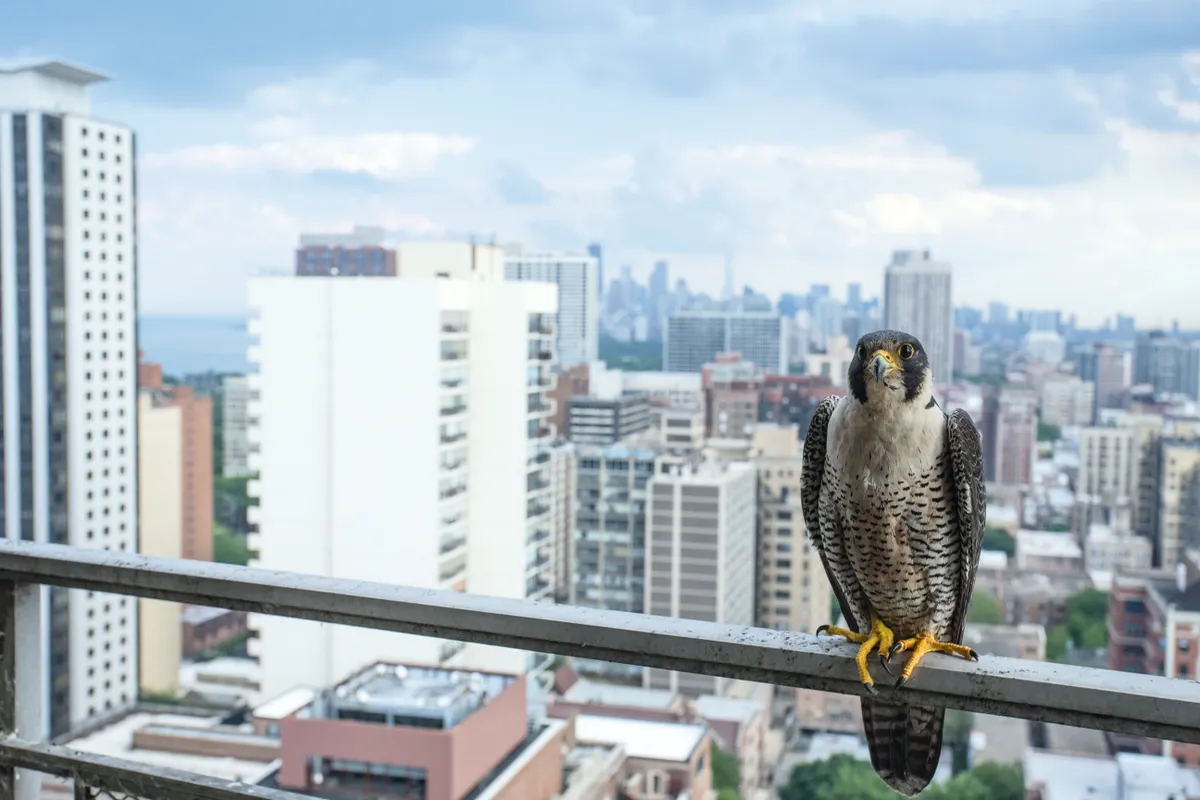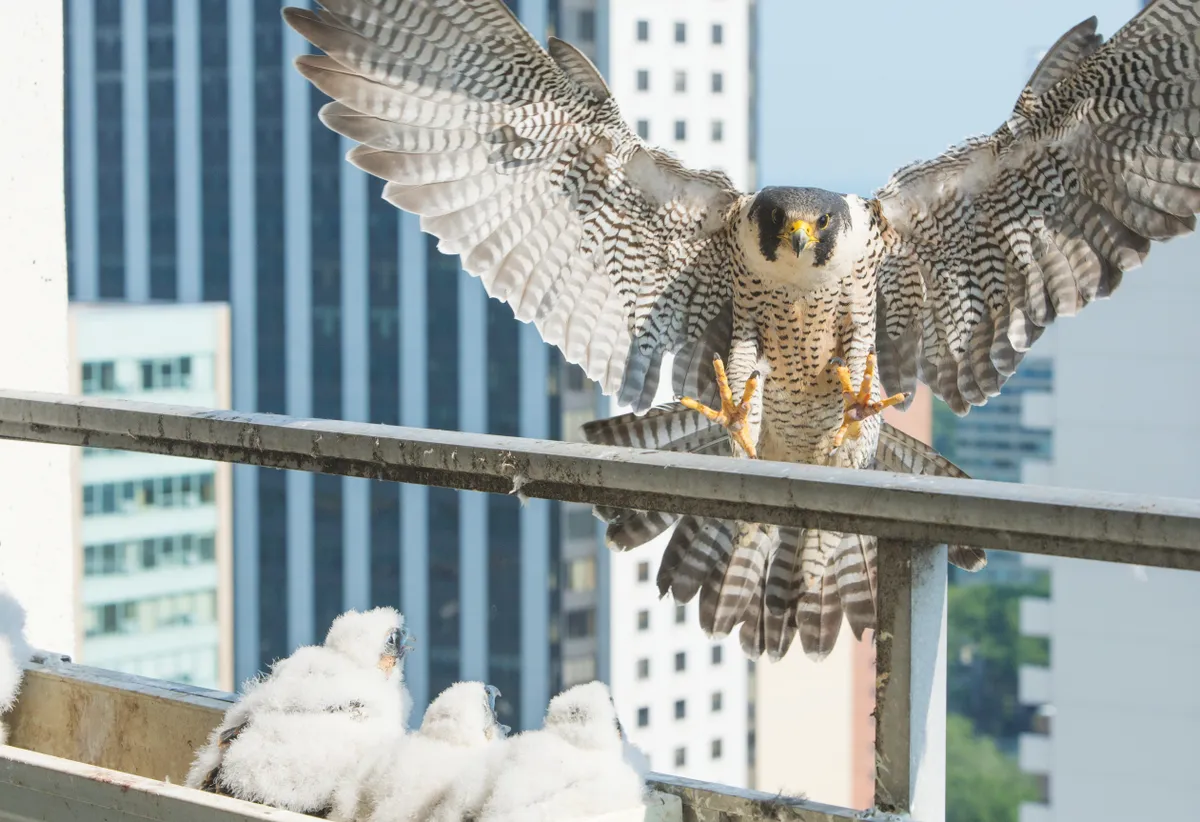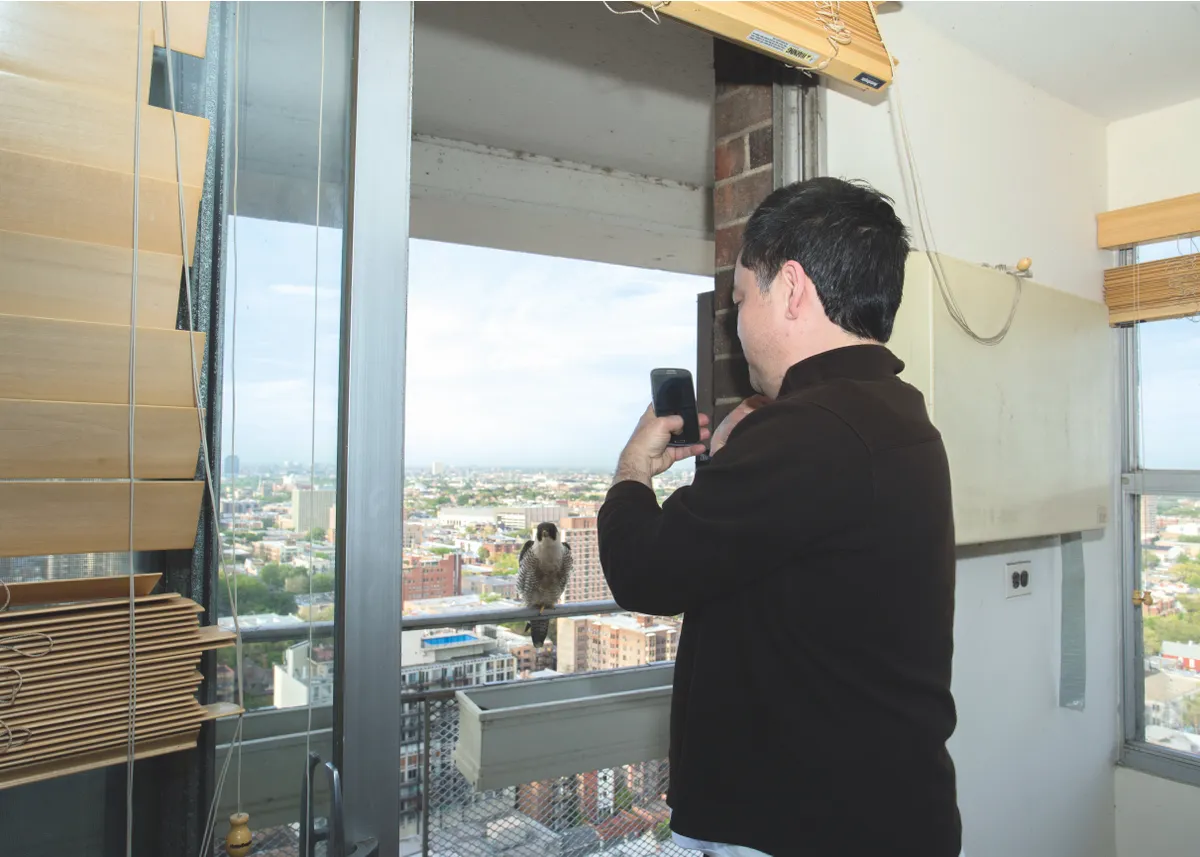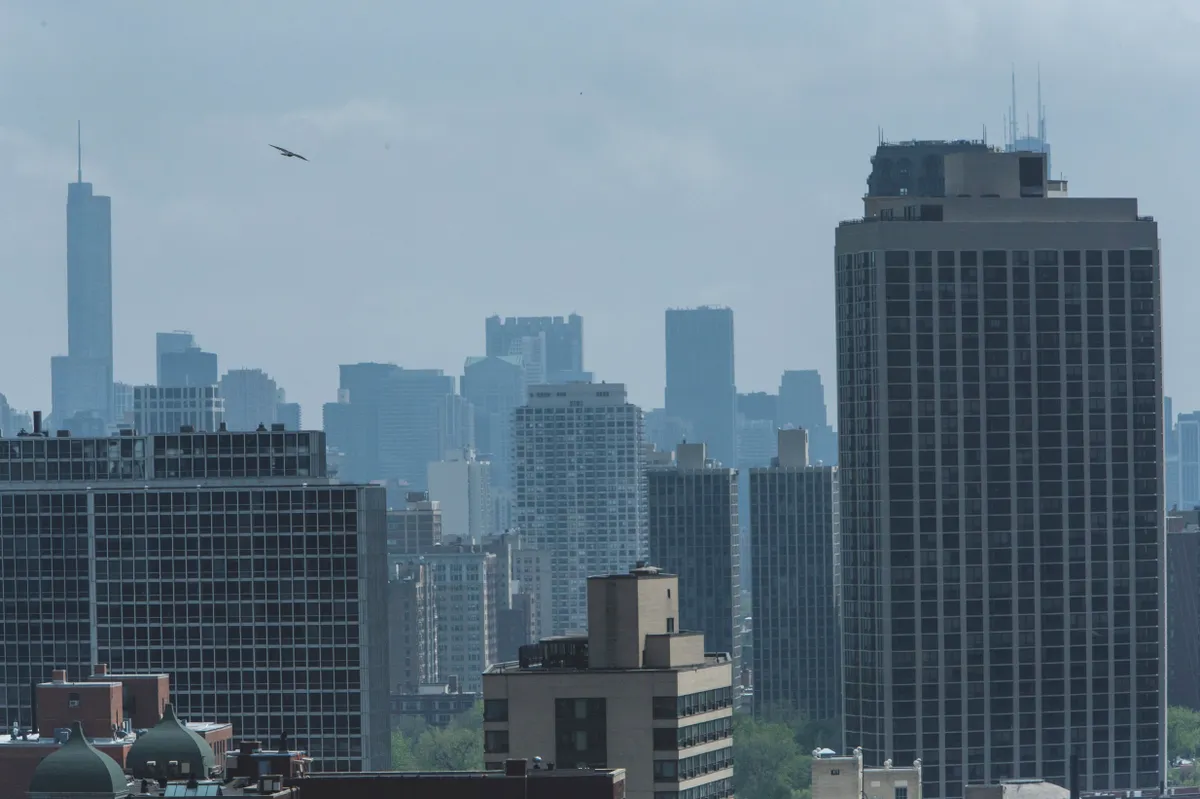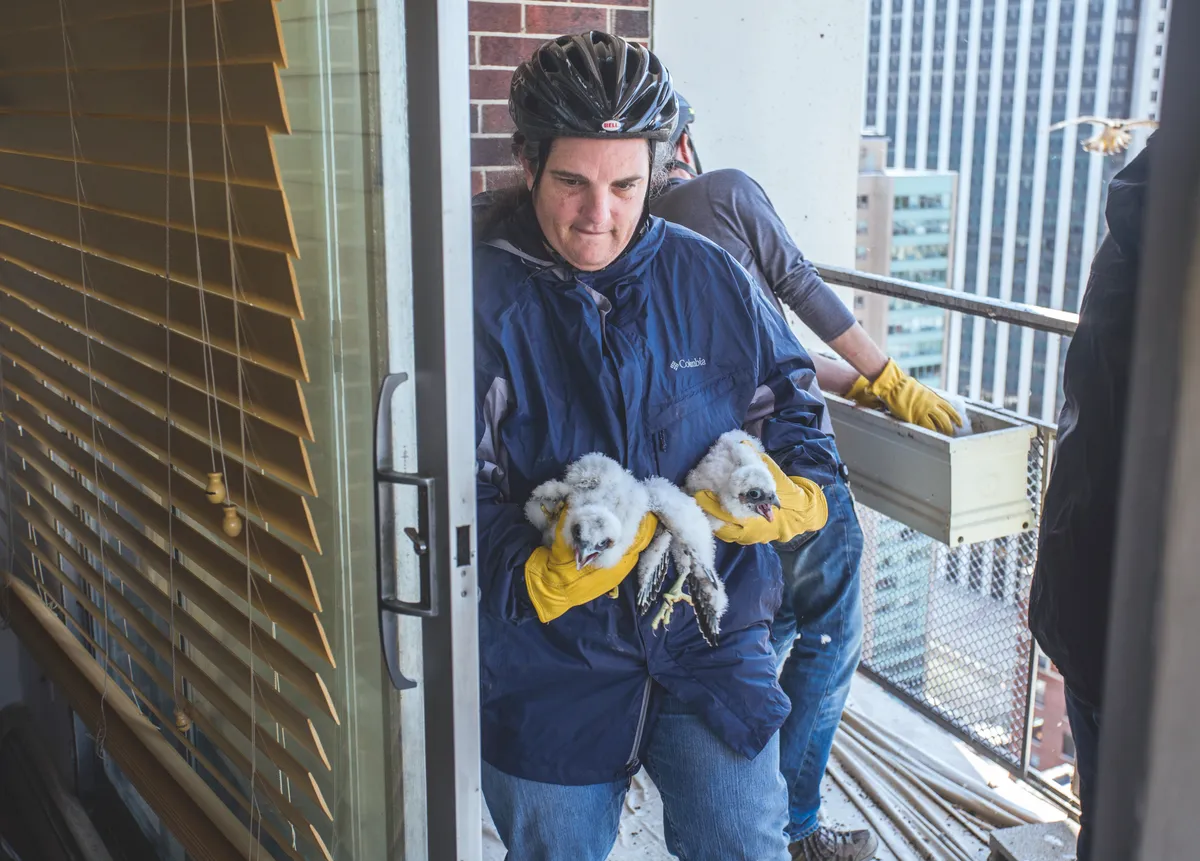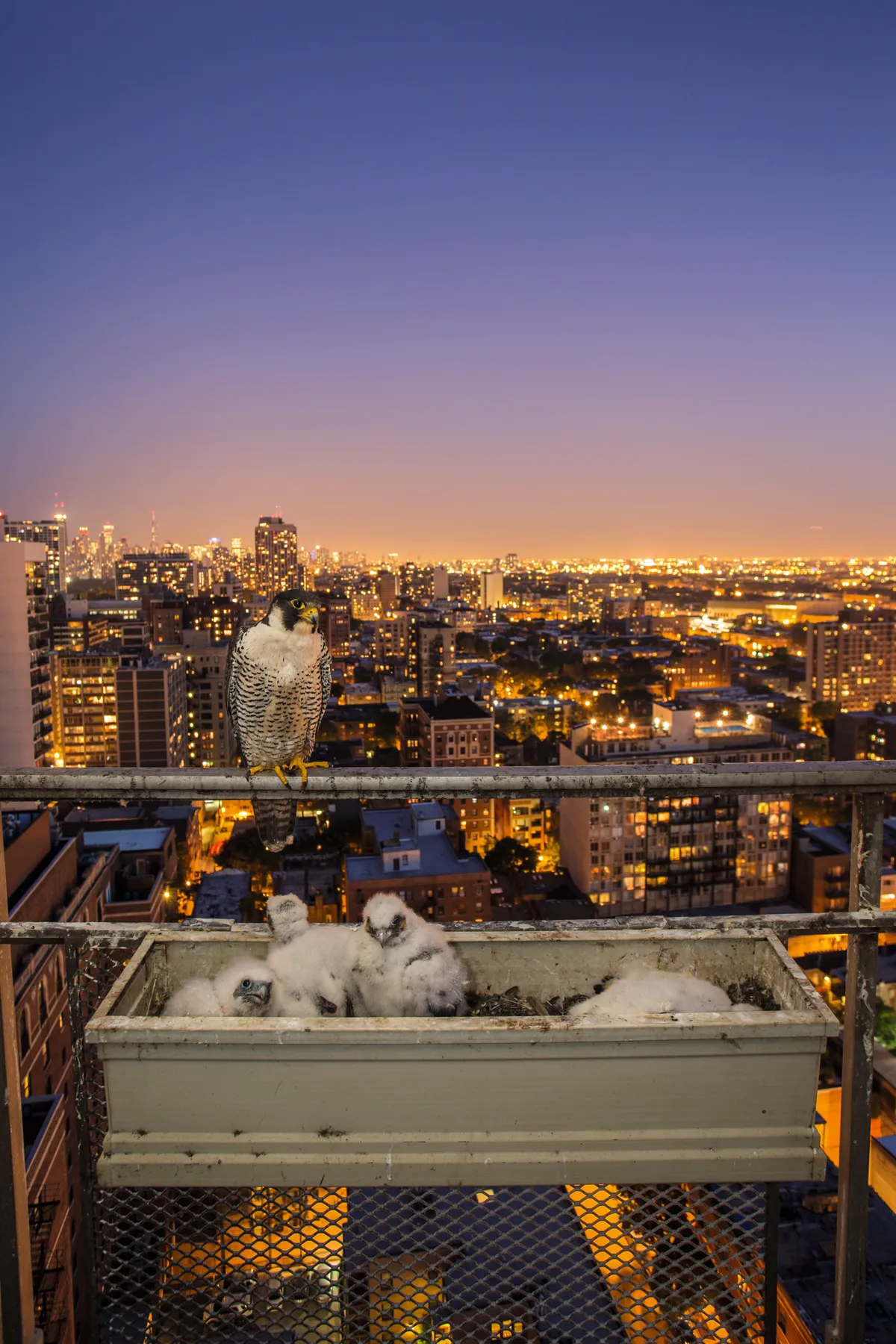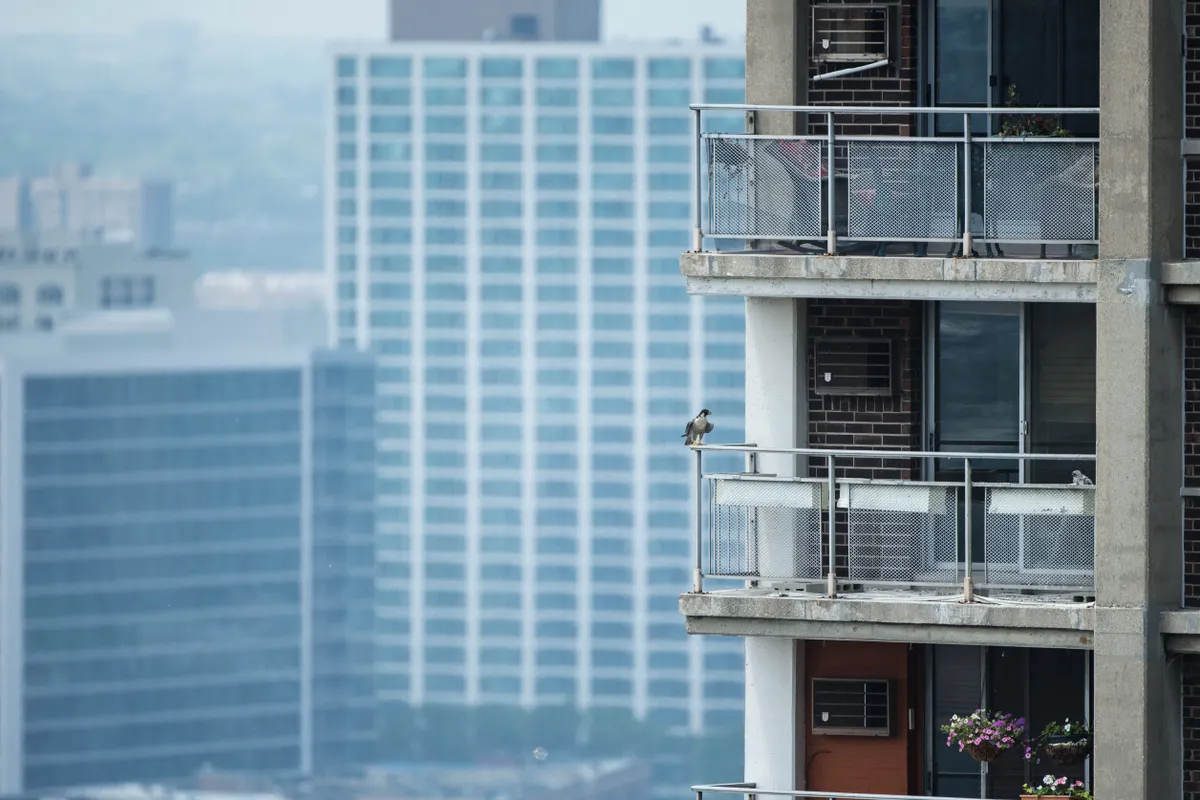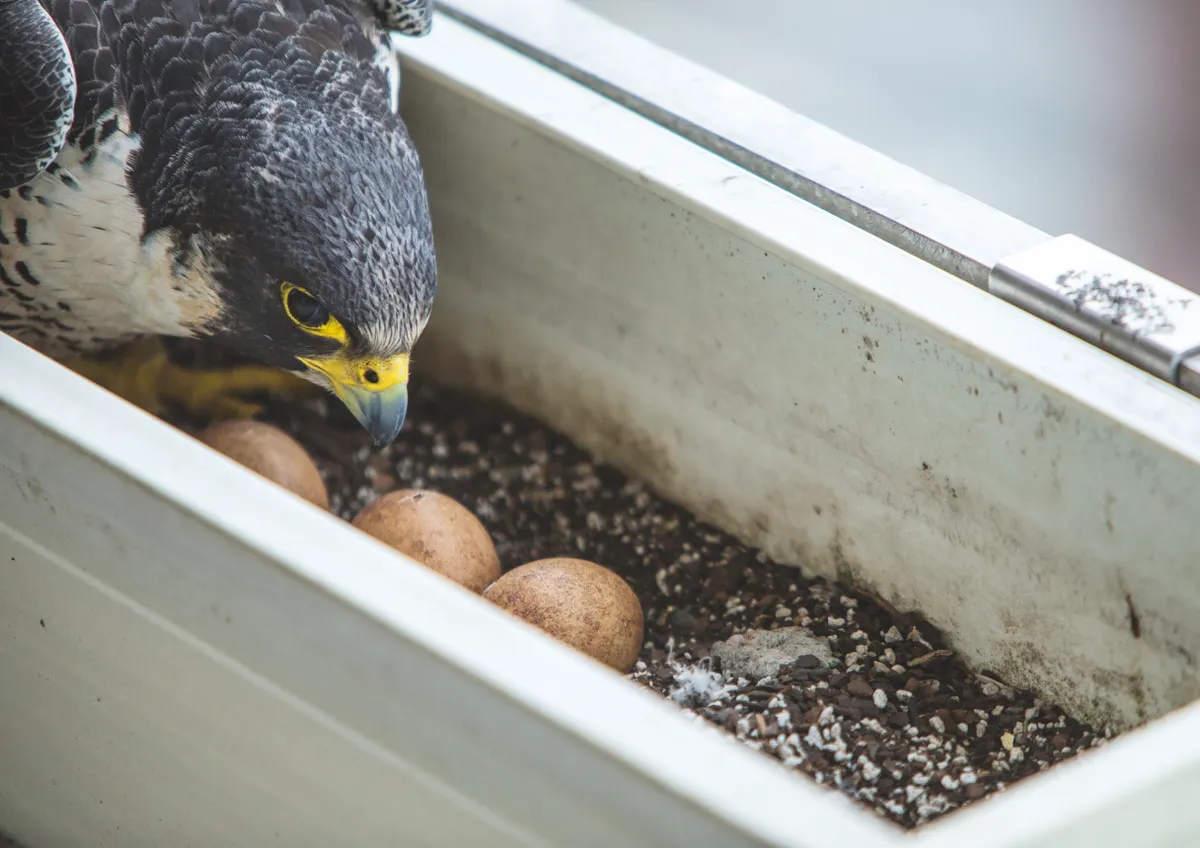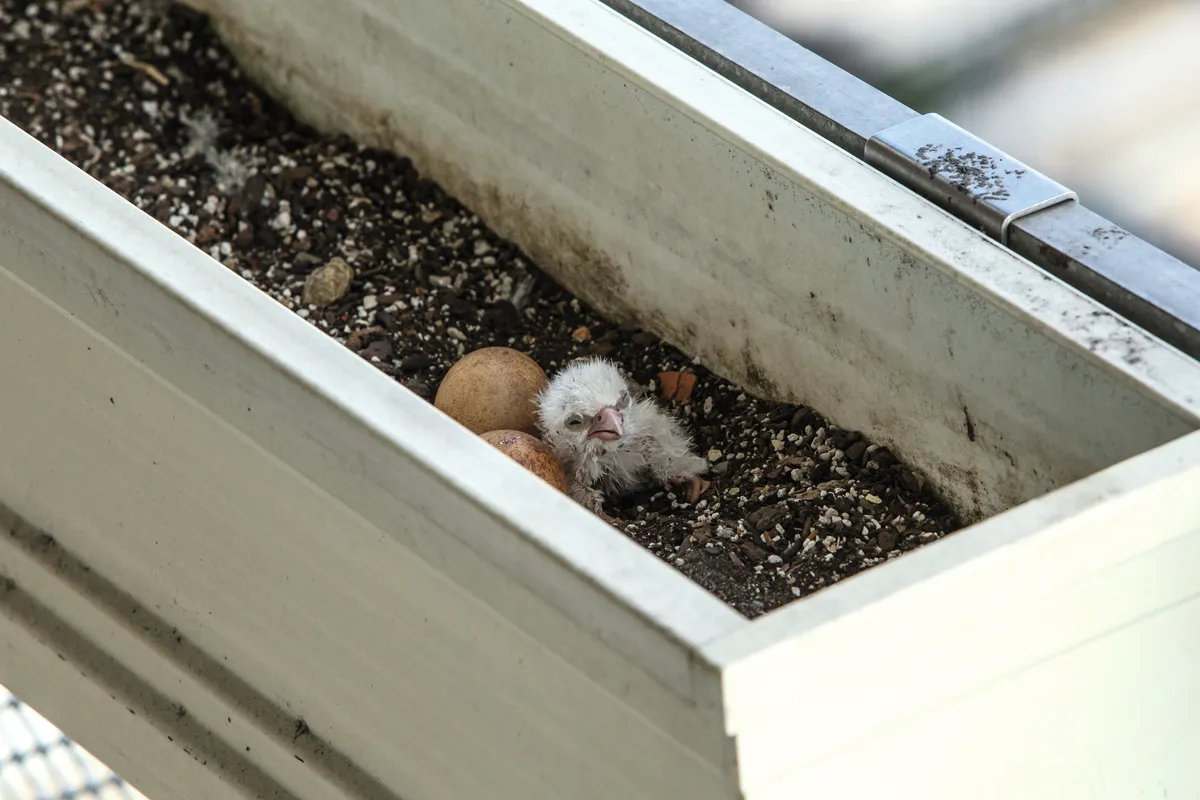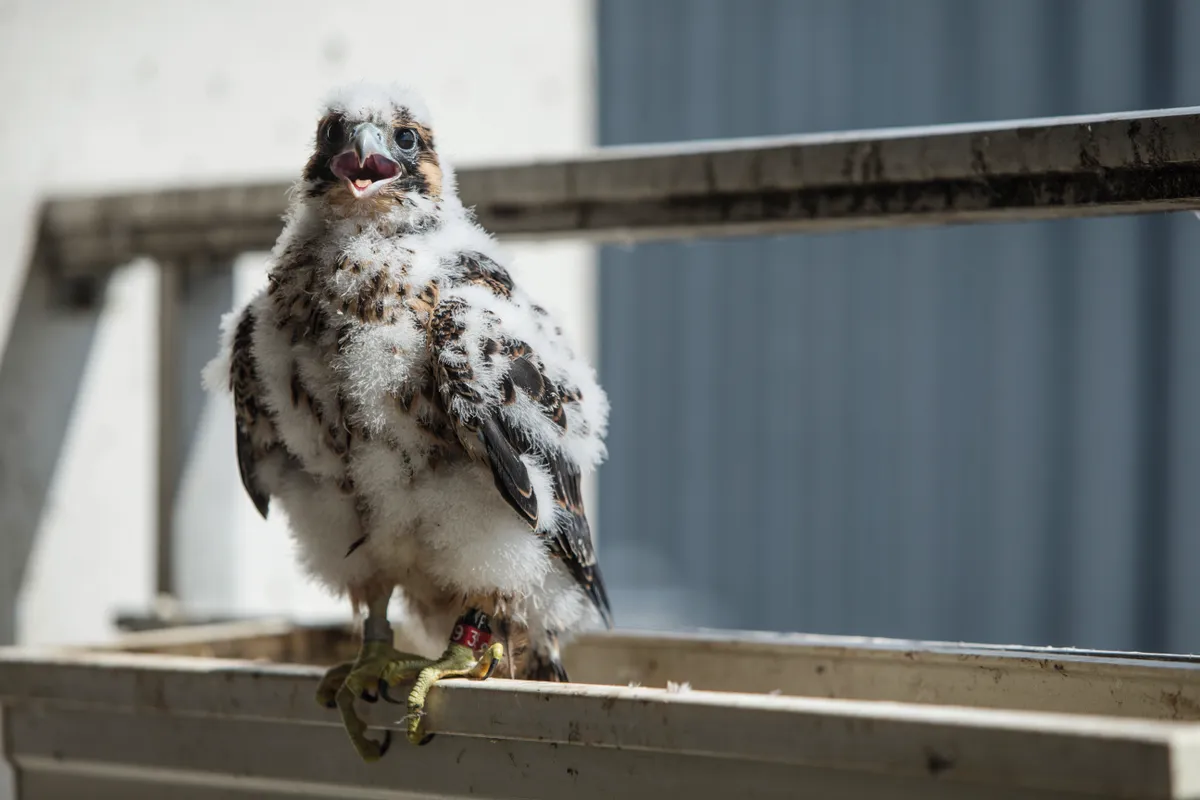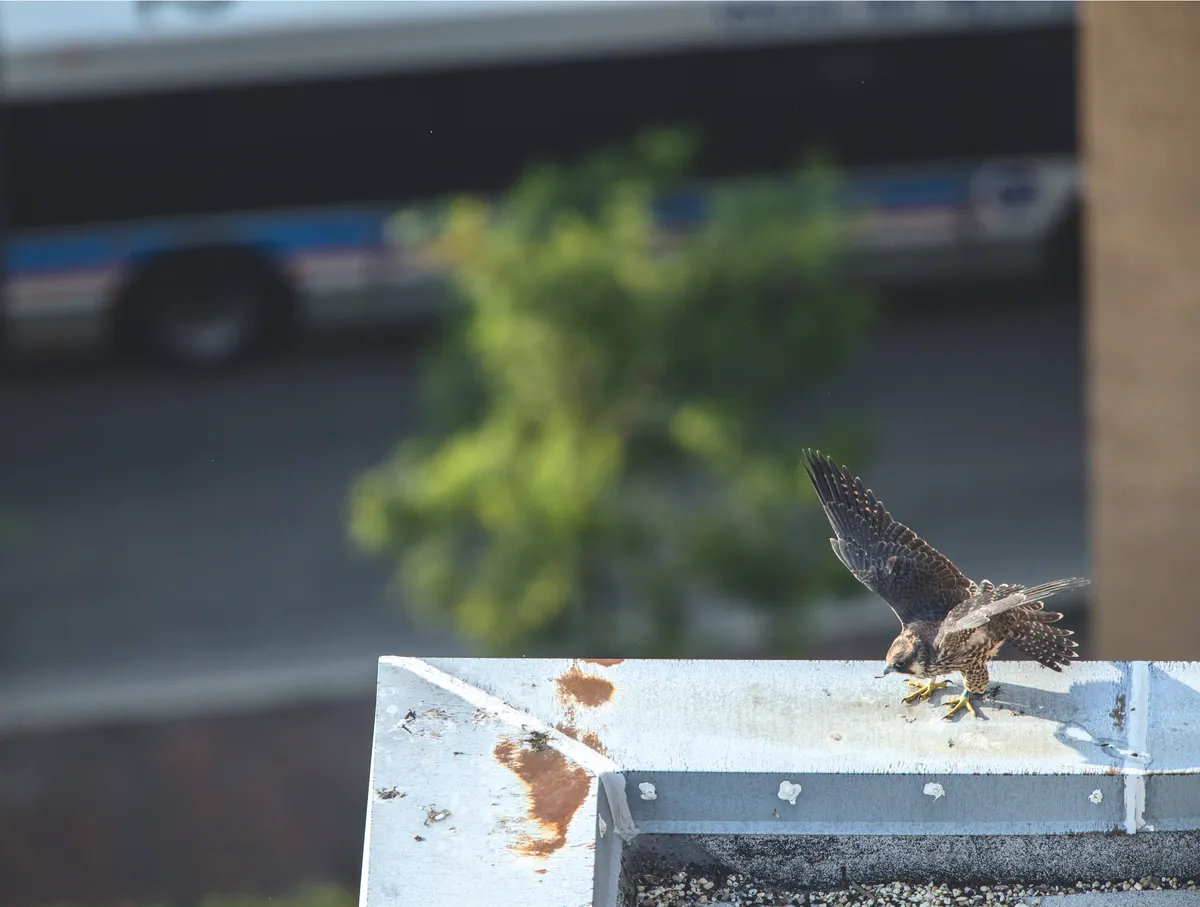About the photographer
Photographer Luke Massey visited Chicago’s peregrines with writer Katie Stacey in 2015.
“I look for wildlife everywhere I go, and if possible I'll take its photo or film it.
My passion is to show people what is on their doorstep or further afield, to show them something new or educate them about a species in decline.
If in my career I can help save one species I'll be happy, but for the moment I intend to try and help save as many as possible through my work,” says Luke.
See more fantastic wildlife photos by Luke Massey.
To view the images as a slideshow, click on the arrows in the top right hand corner of the photos below.
The female peregrine rests on the railing of her spectacular nest site in early April 2015. © Luke Massey. The female returns to the nest where her two-week-old chicks beg for food. © Luke Massey. Chicago resident Dacey Arashiba photographs the female on her usual perch. © Luke Massey. The male flies towards central Chicago to hunt. © Luke Massey. Mary Hennen, director of the Chicago Peregrine Program, rings two of the chicks. © Luke Massey. The female takes a plucked prey item from the tiercel or male – peregrines mainly hunt other birds. © Luke Massey. The pair perform a food pass of a pigeon. Peregrines are expert fliers and incredibly fast, exceeding 350kph in controlled vertical dives when swooping on prey. © Luke Massey. A rare night-time photograph of the female and her brood. Helped by the city glow, urban peregrines are known to hunt after dark. © Luke Massey. The female perches on the balcony of the nest site – note the chick in the window box. Peregrines breed when about two years old; clutches range from one to six eggs. © Luke Massey. Peregrines usually lay three or four eggs at two-day intervals, and begin incubating when the third or fourth is laid, for 29– 33 days. The male takes over periodically to allow his mate to stretch her wings and eat. © Luke Massey. When they are newly hatched, the downy white chicks are totally helpless, and for a few days can’t see very much. They are brooded to keep them warm, while the female peregrine tears meat into small pieces for them to eat. © Luke Massey. The chicks grow rapidly, but are still brooded by the female peregrine. After three weeks the chicks start replacing down with juvenile feathers; by the time they are approximately five weeks old the birds are fully feathered. © Luke Massey. In their final days in the nest juvenile peregrines spend much of their time exercising their wing muscles, and often leave the scrape to explore nearby window sills or ledges. The birds finally fledge when they are about six or seven weeks old. © Luke Massey. 